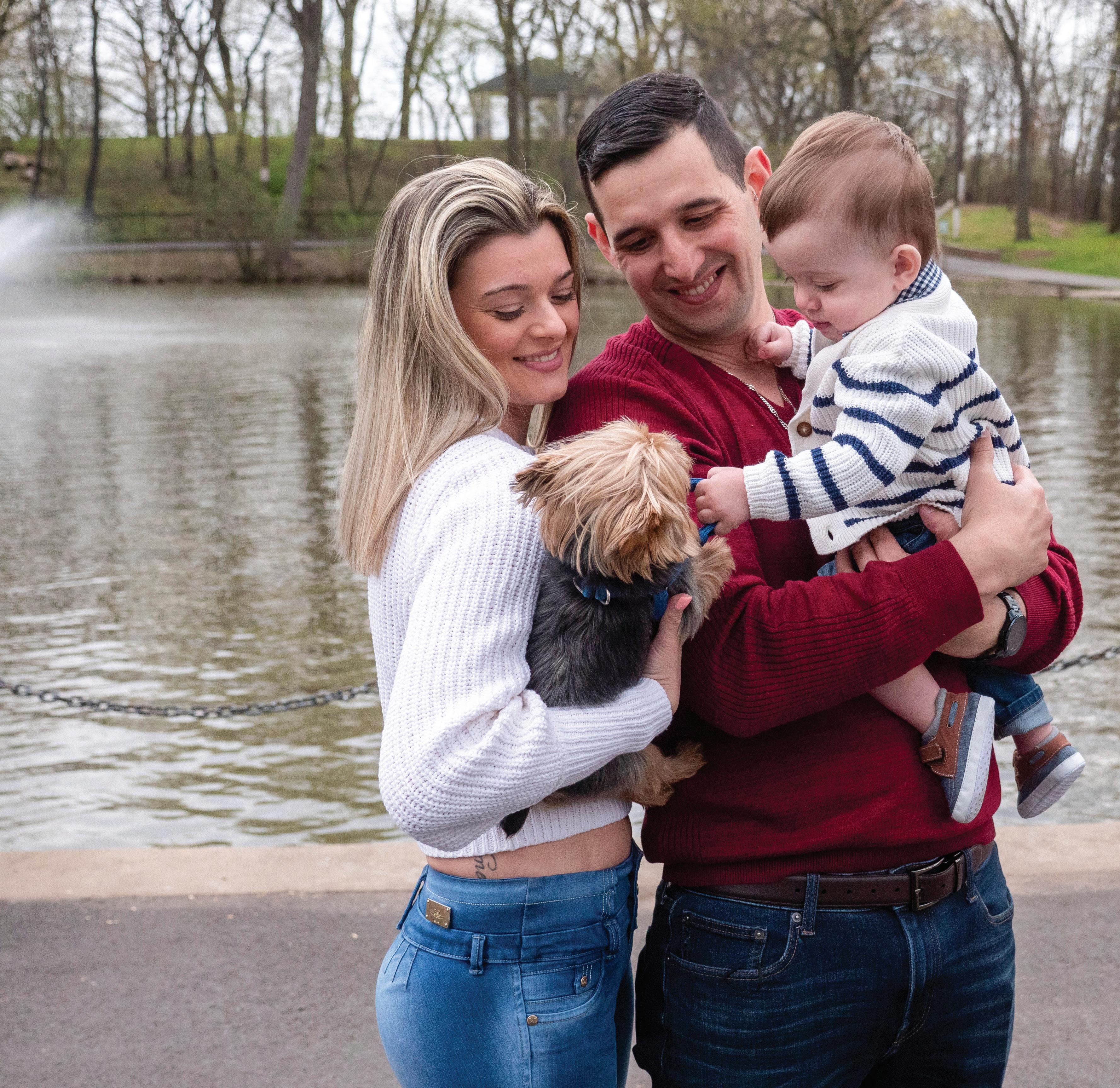
4 minute read
A GRATEFUL HEART
A GRATEFUL
HEART
ADVANCED CARDIAC CARE ENABLES A SHORT HILLS MAN TO BOUNCE BACK FROM AN AORTIC DISSECTION.
Attorney Mike Spar needed emergency surgery for a tear in his aorta. Weeks later, he was back on the tennis court.
One of Mike Spar’s favorite sayings is, “You’re better off lucky than good.” The 65-yearold Short Hills attorney usually applies this insight to tennis, which he plays often. In fact, he was on the court this past January when two incidents made clear that something was wrong—and that he was lucky indeed.
The first happened while he was playing singles on Saturday, January 9. “I had a weird sensation in my chest, like when you breathe really cold air and get a spasm or cramp,” he recalls. He stopped playing for a few minutes and the sensation passed, so he continued to play.
After that episode, Mike played tennis for three hours on Sunday, then paddleball for an hour and a half Monday night. On Tuesday, he was casually hitting tennis balls against a wall. “That’s when it happened,” he says.
The cramping sensation returned. “But this time my peripheral vision looked staticky, filled with electric, sparkly things,” he says. And the world seemed to get brighter, “like if you’re in a room with a dimmer and somebody flips the switch all the way up.”
RIGHT PLACE, RIGHT TIME
Mike had just seen his cardiologist, Robert Charney, MD, the previous week and all had seemed well. He’d started seeing the specialist more than two years earlier, following a bout of lightheadedness. At that time, tests had determined that his aorta—the major blood vessel that supplies blood from the heart to the rest of the body—was slightly enlarged. His aortic valve, which forms a gate between the heart’s pumping chamber and the aorta, was slightly leaky as well. “We were monitoring it, but none of this was bad enough to warrant surgery,” Mike says. “My doctor had said I could run a marathon but shouldn’t lift heavy things. I didn’t want to run a marathon, but playing two to three hours of tennis was not a problem.”
After the second incident, Mike drove home and his wife drove him to Saint Barnabas Medical Center (SBMC). There, they learned that the situation was grave. Mike was experiencing an aortic dissection, a life-threatening condition in which the aorta tears and its layers separate, sending blood coursing through abnormal pathways. The brightness and sparkles Mike perceived were due to a drop in the blood flow to his eyes.
“It was almost happenstance that I went to Saint Barnabas Medical Center over another hospital the same distance away,” Mike says. “I found out later that the medical center has cardiothoracic capabilities that the other place doesn’t.” Had he gone elsewhere, he probably would have had to be transported to SBMC, losing valuable time.
“With acute aortic dissection, every delay of care, even of an hour, increases the risk of dying,” says Ioannis Loumiotis, MD, a cardiothoracic surgeon at SBMC and Newark Beth Israel Medical Center and a member of RWJBarnabas Health Medical Group.
Dissections typically are due to high blood pressure but also can be caused by preexisting aortic aneurysms—a bulging and weakening of the aorta. In some dissections, the aorta wall can rupture, often fatally.
“Mike had an aortic aneurisym, which is basically ‘stretching the aorta,’” Dr. Loumiotis says. “An aneurysm is a chronic condition that 90 to 95 percent of the time causes no symptoms at all. Patients many times are not even aware they have one, and the diagnosis is made when they are worked up for other reasons. Aortic aneurysms can be fatal, though, so regular follow-up is mandatory because of the risk of complications like aortic dissection. He was lucky—many patients don’t survive this.”
In another piece of luck, Mike’s cardiologist already was at SMBC doing rounds when Mike got there. “Dr. Charney was able to inform people what was going on with my history. They did a CT scan quickly to see why my blood pressure was so low,” Mike says.
“The only chance of survival for these diseases is open-heart surgery to repair the dissection,” Dr. Loumiotis says. “It’s very important to have a top-notch team take care of aneurysms and conditions like aortic dissection. I am really proud to say that at Saint Barnabas Medical Center we have created a unique team with exceptional abilities to take care of aortic emergencies and complex aortic cases.”
Shortly after he’d been hitting balls against a wall, Mike was whisked into an operating room.
MANAGING RISK
Mike bounced back quickly after surgery. “Considering that they opened my chest, I’m amazed at how little pain there’s been,” he says. Recovery takes four to six weeks. By March, he was back on the tennis courts, hitting a ball. “I expect that he’ll be playing tennis, enjoying himself and having the quality of life he had before, with one exception: He has to be carefully followed up,” says Dr. Loumiotis.
Having one dissection or aneurysm makes another more likely. “That doesn’t mean it will happen, but he’s at higher risk than most people,” Dr. Loumiotis says. “Our dedicated aortic surgery program has specific protocols and guidelines for managing aortic disease.”
“I’m pretty lucky in terms of how everything broke,” Mike says. “Getting to the hospital and falling into the hands of very good doctors and care, and coming out the other side in as good a shape as I could hope. As I said, better off lucky than good.”
IOANNIS LOUMIOTIS, MD
Whoever your heart beats for, our hearts beat for you. To connect with a top cardiovascular specialist at Saint Barnabas Medical Center, call 888.724.7123 or visit www.rwjbh.org/heart.










